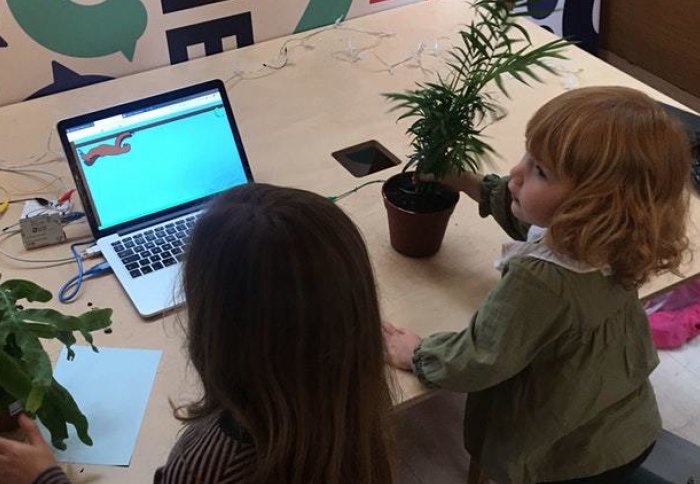Improving children’s hospice care through innovation

IGHI’s latest Global Health Forum explored the important role innovation can play in transforming children’s hospice care.
The Forum addressed the unique challenges that come with caring for children with life-limiting illnesses and their families. The event brought together different perspectives from experts working in the field and those with personal experience.
Children’s charity Together for Short Lives published research which found that 49,000 children and young people were expected to have shorter lives in the UK due to life-limiting illnesses. For those families, hospices can be a valuable resource in supporting their children and providing palliative care.
Yet children’s hospice care faces many issues. This was highlighted by Forum chair Ivor Williams from IGHI’s Helix Centre, who leads some of the Centre’s work in end-of-life care. “The complexity of care for a child is one of the biggest issues,” said Williams, Senior Designer. Challenges include ensuring care transcends the entire life of a child, not just the end of their life, and personalising care for families. From barriers to accessing mobility equipment to difficulties in administering multiple medications and planning palliative care, for each child and family, no set of challenges are the same.
The clear message from the outset of the Forum was that addressing such difficulties will require dynamic solutions in order to improve the quality of hospice care. Williams also emphasised that there are many opportunities for design to unpick the systemic problems in this field.
Looking to the internet
The internet has been an important tool in modernising healthcare solutions. Dr Ellen Henderson from the Louis Dundas Centre for Children’s Palliative Care at GOSH has been investigating the role that the internet could play in engaging children and their families in research.
She explained that the internet has traditionally served these groups by providing information on symptom checking and tracking for children, and online peer-to-peer support. Yet Henderson suggested that the internet has potential to go much further in changing children’s hospice care. She felt internet innovation could transcend geographical boundaries to information and support, ensuring all parents have access to the services they need for their children.
Most crucially, Dr Henderson believed it would take the right innovation to effectively engage children and parents in research: “Children lead complex lives; any innovative solution must also be complex.” Henderson also noted the potential challenges with internet-based innovation: “Research and clinical practice must be accessible to those who struggle to read and write,” said Henderson. She stressed that internet innovations had to be mindful of privacy and confidentiality issues.
Putting children and families first
The Forum heard from Sue Hogg, Director for Children and Families at Children's Hospices Across Scotland (CHAS), who spoke about the Scottish journey of hospice care for young people.
Hogg said that the need for children’s care in Scotland was complex and growing, particularly among deprived communities. CHAS has been working towards developing a strategy which reaches different groups of children in various situations life-limiting conditions can present. She felt it was key to plan in collaboration with the families affected: “We do all our planning in developing our services in partnership with families and asking them how they want us to deliver care.”
Designer Alessandro Masserdotti from Orto, based in Italy, also emphasised the importance of focusing solutions on the needs of children and families through co-design: “Inclusive design means designing with and not for people.”
Masserdotti, whose work has involved designing solutions for children with disabilities said that empathy should be at the forefront of ideas. Currently, Masserdotti is working with the Helix Centre in the design of a new children’s hospice in Bologna.
Learning from people’s experiences
As echoed by all the speakers of the Forum, having the engagement of families and children with life-limiting illnesses is crucial to transforming hospice care. Gabriella Lake, a parent who lost her daughter to metabolic disease explained her experiences of hospice care for her child.
Thea, Lake’s daughter, was diagnosed when she was just 10 months old. Lake and her family accessed support at children’s hospice Forget Me Not, an organisation that Lake felt allowed her family to feel “normal” at such a difficult time: “At Forget Me Not, we had social events, meeting other people…The only place we ever felt normal was when we were with other people like us. Those connections meant everything to us and everything to our kids.”
Reflecting on her experience, Lake felt that ultimately more needed to be done to ensure all parents, regardless of background, were getting the support that they need: “Support was available to us because of where we come from, but most people we met aren't in the same position. It made me question how and where society supports these families who are placed in a vulnerable position without warning. There needs to be a conversation about what families need and what families want.”
If you’d like to hear more on the discussion on innovation children’s hospice care, watch the event in full here:
To find out about other events like this, sign up to our mailing list to receive more information about our monthly Global Health Forums.
Article text (excluding photos or graphics) © Imperial College London.
Photos and graphics subject to third party copyright used with permission or © Imperial College London.
Reporter
Nikita Rathod
Communications Division
